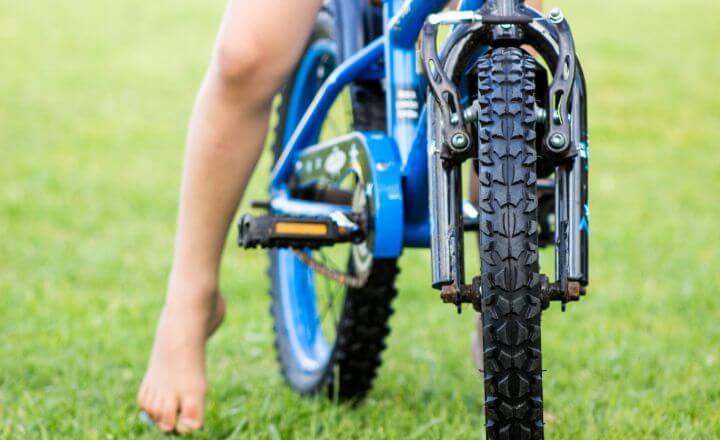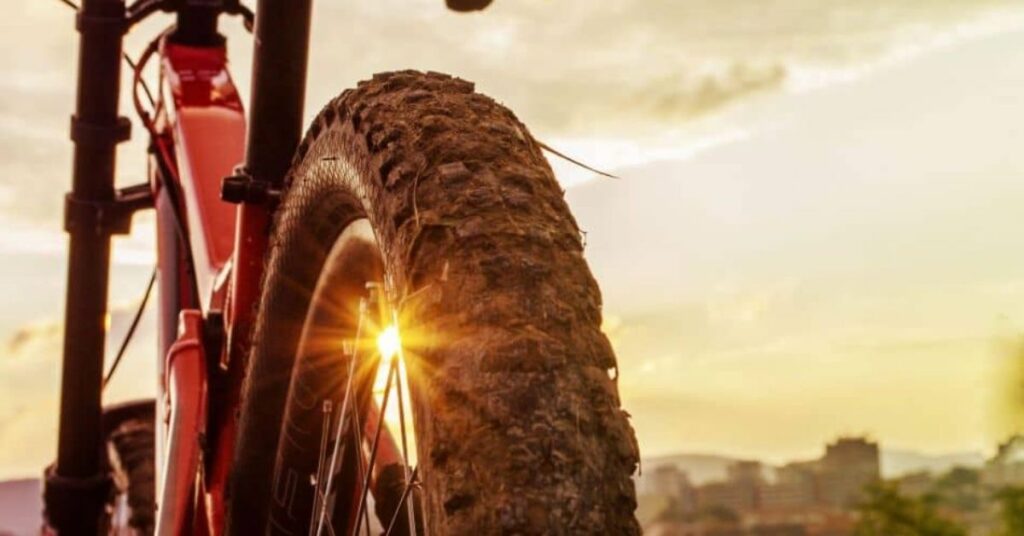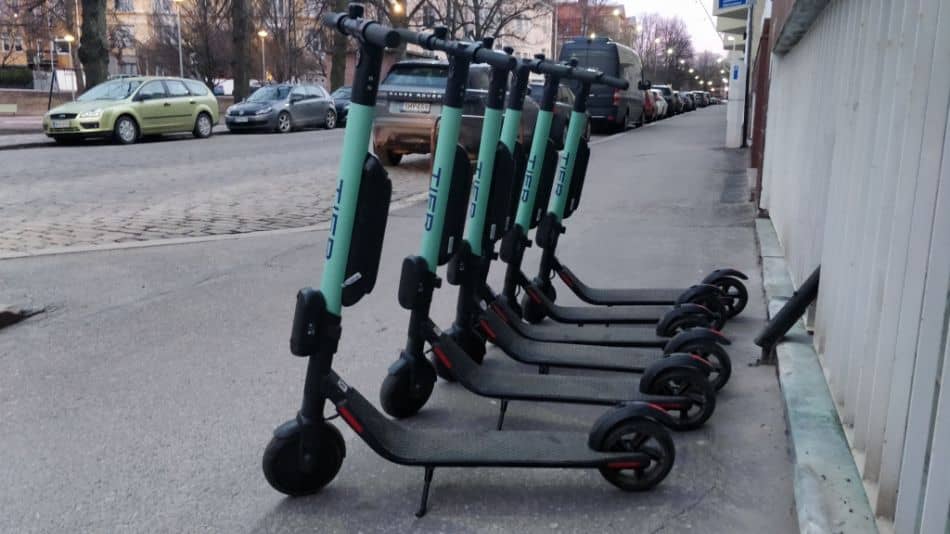(Last updated on March 6th, 2023)
When I first got a bike, I had no clue what I was doing with the gears, and it took me a while to learn. Bikes are a great tool; you can go worldwide efficiently. What makes them interesting is they are all different shapes and sizes and function in different ways.
We are always asked at 333Fab about how to use bike gear. Although this might seem like a simple question, there’s a lot more to think about when it comes to shifting around your chainrings and cassette.
In this article, we’ll be speaking about what bike gears are, the different types of bike gears, how to use them, some top tips, and even more.

Image Credit: Robbie Ferri
What Are Bike Gears?
When cyclists talk about their gears, they speak about what we call the groupset or drivetrain. This is the system on the bike that, when you pedal, propels the bike forward.
By using different-sized cogs on the front and rear, you can adjust the gear ratios of the system, making it either easier or harder to pedal. Gears are designed to go up and downhill efficiently.
A groupset is made up of several components.
- Chainset,
- Cassette,
- Chain,
- Derailleurs
- Shifters
These are all connected by cable inner and outers which you control while riding.
What Are the Different Types of Bike Gear?
A lot of cyclists don’t know the different types of bike gearing systems. What makes them unique is the way you change gear.
Here we are going to speak about some of the most common types.
Road Bike Shifters
The first type we will speak about is the road bike shifters. They are used on drop bar bikes. These are great because of their usability in multiple positions and come with integrated brakes.

Image Credit: Robbie Ferri
Mountain Bike Shifters
Modern mountain bike shifters are also known as trigger shifters. These are what you generally use on flat bars. They are excellent for keeping maximum grip and having full control of the bike. They are typically separate from brakes, but some models are integrated.

Image Credit: Robbie Ferri
Downtube Shifters
Next, we have downtube shifters. These are what you will typically see on older road bikes. They are on the frame located on the downtube. They are easy to use but a little more awkward as you must completely remove your hands to change gear. These are separate from your brakes.

Image Credit: Robbie Ferri
Twist Shifters
Twist shifters are generally used on flat bars. They sit around the bars, and you twist them forward and back to change gears. They sit separately from the brakes, and only a few bikes have them now, as they are unreliable and wear out quickly.

Image Credit: Robbie Ferri
How Do Gears Work?
Gears work in a very simple fashion. When you use the shifter, it pulls a cable which in turn changes the position of the derailleur moving the chain. It’s that simple, and this is what makes the bike so efficient.
Some gears work in other ways, such as electronically via cables or even wireless. Groupsets like the SRAM AXS and Shimano Di2 have these capabilities.

Image Credit: Robbie Ferri
How to Use Bike Gears
Obviously, there are a lot of types of bike shifters. The best way to explain how each work is to explain the mechanism of each. Then we will tell you how to use gears when going up and down hills.
Road Bike Shifters
Modern road bike shifters are very easy to use, even though they might look complicated. Typically on a road bike shifter, your hands sit at the top, and the gearing buttons are on the brake and lever.
You shift with two points. A small button and the whole brake lever. On the right-hand shifter, the small button takes you to lower the cassette putting you into a tougher gear. If you want to go the other way to an easier gear, you pull the whole lever in the same direction.
On the front chainrings, you have the same, but the smaller button drops you down the chainrings making it easier, and the whole lever takes you up the chainrings making it harder.
Mountain Bike Shifters
Mountain bike shifters work differently from road shifters. On each side of the handlebars, you have a small block. This block has two switches on. On the right shifter, the top switch takes you up the cassette and puts you in lower gear, making it tougher.
On the left, you have the same format. The top button takes you down the chainrings, making it easier, and the bottom button takes you up the chainrings making it tougher. These are generally easier to use compared to road shifters.
Downtube Shifters
Downtube shifters come in two different types. You have friction shifters and index shifters. Friction means the shifter is free, and you select the position yourself. Index shifters mean the click into place.
The downtube shifter on the right moves you up and down the cassette. The downtube shifter on the left will control the chain on the chainrings. They are very easy to use, but be careful when you use them as you won’t have that hand near the brakes.
Twist Shifters
You won’t often see twist shifters on modern bikes, but they are important to speak about. A twist shifter adjusts the cable by twisting around the handlebars with it. On the right shifter twisting forward and back will take you up and down the cassette, making it easier or harder.
On the left, you will have a similar shifter, controlling the front derailleur moving around the chainrings instead. Twist shifters are less reliable and are tougher to use; hence they are less popular.

Image Credit: Robbie Ferri
Understanding Bike Gears and How to Use Them
So now you know how to control the bike gears, it’s time to learn how to use them properly when you’re out riding. In this next section, we’ll tell you how to use gears properly to climb and descend the best you can.
Here’s what you need to know.
The Front Chainrings
You will generally have either 1, 2, or 3 chainrings on the front. Your left shifter controls this. If you only have one, that is your only choice and where you have to be.
If you have 2 or 3, these will offer different ratios for you to use. The smaller the cog on the front, the easier it will be to climb a hill, as it has fewer teeth and a better ratio for lower speeds.
If you want to go downhill quicker, you’ll want to use the bigger chainring. This will give you more teeth and a better ratio for higher speeds.
The Rear Cassette
The rear cassette can have as few as 5 cogs and as many as 13 cogs. You control where the chain sits by using the right shifter. The rear cassette works oppositely to the chainrings at the front.
The more teeth at the back, the better ratio for going up a hill. The fewer teeth, the better for higher speed. This is because it’s working opposite to the front chainrings. You will generally use the rear cassette much more than the front chainrings.

Image Credit: Robbie Ferri
How to Use Gears to Climb
The gear will be your best friend when it comes to climbing a hill. Here’s what you need to do to get the most out of your bike.
If the hill is steep, shift down a few gears on the rear cassette. This will change the ratio to make it easier to get uphill, and you should feel like the pedals turn much easier.
Drop the front into a smaller chainring if you feel it’s too tough on the legs. This will make a big difference, and you might need to go up a few gears on the rear cassette to compensate.
The best climbing gear on your bike is when you are in the smallest chainring on the front and the largest cog on the rear cassette.
How to Use Gears to Descend
When going downhill, it’s easy to stop pedalling and rolling. If you want to gain speed and make the most of the downhill, you will want to be pedalling.
When you get to the top of the hill, and it’s time to go down, you first need to ensure you are in the biggest chainring.
This has the most teeth and gives you the best high-speed ratio.
Once you are in the bigger chainring and you could add more resistance as you gain speed, start shifting up the rear cassette. The smaller cog you can get into on the rear here, the faster you will go.

Image Credit: Robbie Ferri
Cadence Is Key
Cadence is the speed at which you turn the bike cranks.
Studies have shown that the most effective cadences are between 60 and 110. Using your gears, you can stay in this range, meaning you will get the best out of your legs and, in turn, bike.
It is measured in RPM, which means revolutions per minute. So 60 RPM would be 60 rotations of the pedals per minute. You can use a cadence sensor on a bike to see this in real-time.
With gearing, you can adjust the amount of resistance in the pedals. This means you can pedal at the most efficient cadences while riding.

Image Credit: Robbie Ferri
How Can You Best Look After Your Gearing?
When it comes to gearing, you get the best out of it when it’s working properly and has been well looked after. Here are our tips on keeping your gearing in tip-top condition.
Regular Services
Ensuring your bike is regularly serviced will ensure it will work the best it can. Chains can wear out as quickly as 1000 miles. As soon as the chain is worn, it spreads along the whole drivetrain, slowly wearing down the other components.
Keep It Clean
A clean set of gears works much better than a dirty set. Regularly degreasing and oiling it goes a long way to ensure it works the best it can.
Invest in some good Muc Off cleaning products for the best.
Oil
Good lubrication is the key to your gears working properly. Ensure that your chain is always able to work smoothly. Using dry or wet lube goes a long way to helping your performance and prolonging the life of your gearing.
You Can Change the Gears Ratios
It’s also good to know that you can change the sizes of your chainrings and cassette to suit your riding. If you need more gear for climbing, use a bigger cassette. If you want better-descending gears, use bigger chainrings.
Conclusion
Using your gear is an excellent way to improve your cycling experience. We highly recommend going out and just having a play and getting used to how they work and can help you ride.
You will find yourself going much faster up and down hills when you get proficient using gears. This could be the difference between beating other cyclists up a climb or a new personal best.
Over time, you might find that you will prefer some gears to others. Many cyclists go from using road bike shifters to mountain bike shifters as they are easier to use and much more comfortable.
Frequently Asked Questions
To get a good shift, you must pedal lightly when riding along. If you stop pedalling, it won’t shift smoothly; if you have too much pressure, it can damage the derailleurs.
The easiest gear on a bike is the smallest ring at the front and the largest at the rear.
If you are riding down a flat road, you will want to be in the middle of your cassette in your largest chainring.
The best downhill gear you will have is the largest at the front and smallest at the rear.
It might be that you don’t have enough gearing to work with or might need more practice cycling.

I’m Robbie Ferri, a writer from Norfolk in the UK. I love cycling, the gym, and have a huge passion for sharing my stories and knowledge to anyone with the time to read them. My main passion is cycling. I started eight years ago. In that time I have broken world records, cycled all over the world in Ultra Bikepacking races, and am lucky enough to have enjoyed some incredible times on two wheels with some incredible people. I have also worked in a bike shop and with some of the industries leading brands, not just promoting products but designing them too.
Under it all I am just someone very passionate about exploration and living a healthy lifestyle. Everything I do I put 100% into it and feel that life is for living. Never should you have a dull day.




